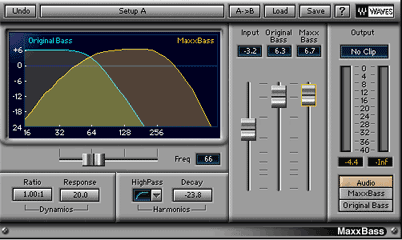Eq Bass Fl Studio

Fl Studio Free Download Full Version
2—Use a Multiband CompressorYou have two multiband compressor options in FL Studio. The Fruity Multiband Compressor, or Maximus.
I would recommend using Maximus as its features are more advanced. How Maximus works is that you have three bands (Low, Mid, High) where you can set the frequency range for each, and then also a single band master compressor on the effect. This gives you added control over your audio through the frequency range, plus you can gel the bands together with the single band master compressor.For example, you could apply a heavier compression setting over the 0–200 Hz region where you bass and kick usually sit, and this won’t affect elements in the higher registers like the cymbals and hats.
So decide where you want the band splits to be by soloing each band and then moving over to the right view to adjust the frequency amount. I don't think your criticism is particularly constructive.It's quite normal to cut out frequencies below 40Hz. It's completely irrelevant to the fact that humans can hear down to 20Hz and all to do with the effect that the cut actually has on the sound. Any sound below 40Hz is difficult to hear and cannot be distinguished as a note.
Eq Bass Fl Studio Trap Beat

In a song written for a diatonic scale it makes absolutely no sense to have any sound coming from these frequencies. It is only ever detected by human hearing as very deep noise, if it is detected in the first place. Cutting these frequencies out adds clarity to the music as humans can't recognise harmonics in this range.Your dislike of the Fruity Limiter is also quite irrelevant. This is an article about mastering in fl studio. Of course you're not going to double the gain or drop the threshold to nearly nothing, that's not mastering. For the size of the edits that were made, Fruity limiter is perfectly adequate.
It also comes with Fl studio so it makes sense that he mentions it. Re Tip 2 (Multiband compression): As a note, careful attention should be paid when setting the low-pass filter's (crossover) slope that separates the lows from the mids. Maximus only offers two slope types: 12dB & 24dB per octave. Using a 24dB slope on a mix can result in low-end disintegration & badly defined lows, as the filter is way too steep to allow for a nice, gentle split. I generally prefer to go with 12 - which offers a more transparent result.
Of course, it still boils down to one listening & paying careful attention to see which one does the job best.

I recently had a major mixing revelation.No matter what I tried I couldn’t get my kick to stand out in the mix. The kick and bass sounded great on their own.But was new to me. So when I’d play them together they’d sound flat and lifeless.Until I did one simple thing that made everything sound perfect.It’s actually really easy. Here’s how I did it.The First Step Towards That Punchy KickFirst of all, I realized that my kick and my bass were fighting for space in the frequency range—the highs, mediums, and lows.
This is no good.Bass and kick tend to share a lot of the same frequencies in the low end. If they stay like this in your mix, they’ll mask each other. So how do you fix it? Setting Up For SuccessIn order to make your kick cut through your mix you need to use compression in a specific wayPut your Kick and Bass into separate tracks. I used Ableton for this example, but the principles are the same in any DAW.
Eq Bass Fl Studio 12
Set up your tracks like this:Here are the loops sounding great on their own:The KickThe BassWhen Your Bass And Kick Are FightingAnd here’s how they sound together:They’re sounding a bit sad and limp. Let’s make that kick shine.